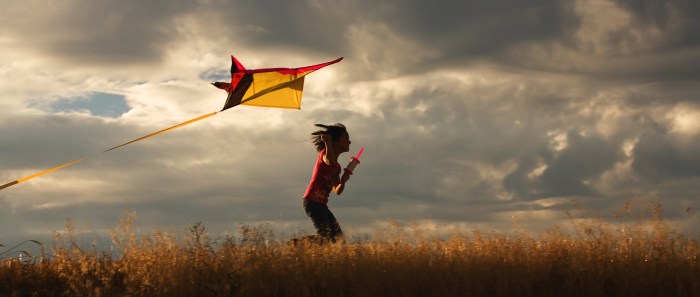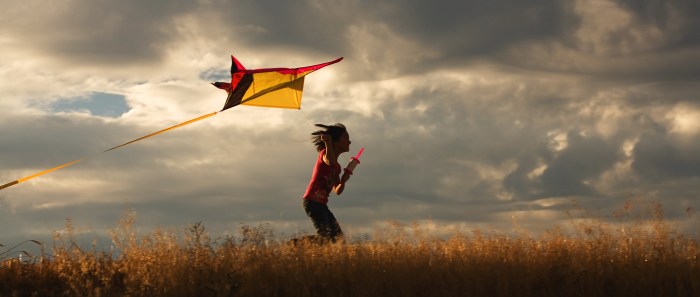
Lets Go Fly a Kite: DIY Kite & Kid Workout
Lets go fly a kite diy kite and kid workout – Let’s Go Fly a Kite: DIY Kite & Kid Workout is more than just a fun afternoon activity; it’s a chance to connect with nature, embrace creativity, and get a great workout! Imagine yourself, a DIY kite soaring high above, and your kids energized by the wind and the thrill of flight.
This post is your guide to building a kite from scratch, finding the perfect flying spot, and incorporating kite flying into a family-friendly workout routine.
Kite flying has been a beloved pastime for centuries, a tradition that spans cultures and generations. From simple paper kites to elaborate, multi-stringed creations, the allure of kite flying lies in its ability to connect us with the wind, the sky, and the joy of creation.
This post delves into the history and science of kite flying, provides step-by-step instructions for building your own kite, and explores how kite flying can be a fun and healthy activity for the whole family.
DIY Kite Making
Kite flying is a timeless activity that brings joy to people of all ages. It’s a simple yet rewarding experience that allows you to connect with nature and enjoy the beauty of the wind. If you’re looking for a fun and creative project, building your own kite is a fantastic option.
With a few basic materials and some ingenuity, you can create a unique kite that will soar through the skies.
Simple Kite Construction
Constructing a simple kite requires readily available materials. You can create a basic kite using a few essential components:
- Frame: Use two lightweight sticks (bamboo, dowels, or even sturdy cardboard) of different lengths, typically 1.5-2 feet for the longer stick and 1-1.5 feet for the shorter one. These sticks will form the kite’s frame.
- Covering Material: Choose a lightweight, durable material like tissue paper, nylon, or plastic. This will be the kite’s sail, which catches the wind.
- String or Twine: Use a strong string or twine to tie the frame together and attach the kite string. You can also use a thin, lightweight rope.
- Kite String: This is the string that you’ll hold to control the kite. It should be strong enough to withstand the wind but light enough to allow for maneuverability.
- Tape: Use strong tape, such as masking tape or duct tape, to secure the frame and the covering material.
Here’s a step-by-step guide to constructing a simple kite:
1. Prepare the Frame
A homemade kite is a great way to get kids active and having fun outdoors. While we were making our kite, I got a great idea for a neighbor gift – a personalized towel with their name on it.
I found a great resource for ideas on 41 neighbor christmas gift idea towel. We’re excited to take our kite out to the park and see how high it flies!
Cut the two sticks to the desired lengths.
Use tape to secure the sticks together at a 90-degree angle, forming a cross shape. Ensure the intersection point is in the center of the longer stick.
2. Cut the Covering Material
Cut the covering material into a diamond shape, ensuring the sides are slightly longer than the frame.
3. Attach the Covering Material
Center the covering material over the frame and tape it securely along the edges, leaving a small opening at the top for the kite string.
4. Attach the Kite String
Fold over the top opening of the covering material and create a small loop.
Thread the kite string through the loop and tie it securely.
5. Add a Tail
Getting your kids active is a great goal, and a DIY kite flying day is a fun way to do it! It’s a great way to get some fresh air, exercise, and even work on some basic STEM skills. To help plan your kite-flying adventure, check out some great goal setting ideas for your family.
You can set goals for the kite itself, like making it fly higher or longer, or even set goals for how much time you spend together as a family. No matter what your goals are, remember to have fun and enjoy the experience!
Attach a tail to the bottom of the kite using string or ribbon. This helps stabilize the kite in flight.
Kite Design and Materials
Kite designs and materials can vary greatly, offering a wide range of options for customization. Here’s a table outlining different kite designs and their corresponding materials:
| Kite Design | Materials |
|---|---|
| Single-line Kite | – Lightweight sticks (bamboo, dowels)
|
| Box Kite | – Lightweight sticks (bamboo, dowels)
|
| Delta Kite | – Lightweight sticks (bamboo, dowels)
Optional Ribbons for a tail |
| Parafoil Kite | – Lightweight fabric (nylon, ripstop)
|
Tips and Tricks for Kite Making
Choose the Right Materials
Select lightweight and durable materials for your kite. Avoid using heavy or bulky materials, as they will make it difficult for the kite to fly.
Reinforce the Frame
Use tape or glue to secure the frame joints and prevent them from coming apart.
Balance the Kite
Ensure the kite is evenly balanced by adjusting the position of the kite string attachment point.
Add a Tail
A tail helps stabilize the kite in flight and prevents it from spinning out of control. Experiment with different tail lengths and materials to find what works best.
Use a Strong Kite String
Choose a kite string that is strong enough to withstand the wind but light enough to allow for maneuverability.
Fly in Safe Conditions
Avoid flying your kite in strong winds or during thunderstorms.
Enjoy the Experience
Kite flying is a fun and rewarding activity. Relax, have fun, and enjoy the beauty of the wind.
Finding the Perfect Kite Flying Spot
Kite flying is a fun and exhilarating activity that can be enjoyed by people of all ages. However, finding the right spot to fly your kite is essential for a successful and enjoyable experience. The perfect kite flying spot offers the ideal combination of wind conditions, open space, and safety considerations.
Ideal Conditions for Kite Flying
The wind is the most crucial factor for kite flying. A gentle breeze is ideal, allowing your kite to soar gracefully without being blown away. The wind speed should be between 5 and 15 miles per hour.
- Wind Speed:A gentle breeze of 5-15 mph is ideal for kite flying. You can use a windsock or a weather app to check the wind speed before heading out.
- Open Space:A large, open area free of obstacles, such as trees, buildings, or power lines, is essential for safe and enjoyable kite flying. This provides ample room for your kite to fly freely without getting tangled or caught.
- Terrain:A flat, grassy area is ideal for kite flying. This provides a stable surface for your kite to launch and land. Avoid areas with uneven terrain, rocks, or debris.
Finding Local Kite Flying Spots
There are many resources available to help you find local kite flying spots.
This weekend, we’re building a DIY kite with the kids! It’s a fun, active way to spend a sunny afternoon, and we’re even going to make it a workout with some kite-flying games. Before we head out to the park, I need to clear out some space in the garage.
I’m thinking of having a yard sale – maybe I’ll even find some inspiration from these yard sale tips from the pros ! After the sale, we’ll be ready to launch our kite and enjoy the fresh air.
- Online Maps:Websites like Google Maps and Bing Maps allow you to search for parks, beaches, and other open spaces in your area. Look for areas that are large and open, with few obstacles.
- Local Parks and Recreation Departments:Many local parks and recreation departments have websites or phone numbers that list their parks and facilities, including areas suitable for kite flying. Contact them for information about kite flying regulations and permits.
- Kite Flying Clubs:Local kite flying clubs often have information about their favorite kite flying spots. You can find these clubs through online searches or by contacting your local parks and recreation department.
Safety Precautions for Kite Flying
Kite flying can be a fun and safe activity, but it’s important to take precautions to avoid potential hazards.
- Avoid Power Lines:Never fly your kite near power lines. The electricity running through these lines can be extremely dangerous. Keep a safe distance and avoid flying kites in areas with overhead power lines.
- Stay Away from Crowds:Avoid flying your kite in crowded areas. This can prevent your kite from getting tangled with other kites or people. Choose an area with ample space for everyone to enjoy the activity.
- Check the Weather:Before you head out, check the weather forecast. Avoid flying kites during thunderstorms, high winds, or other severe weather conditions.
Kite Flying as a Family Activity

Kite flying is a delightful and engaging activity that can bring families together for hours of fun and laughter. It’s a great way to enjoy the outdoors, get some exercise, and create lasting memories.Kite flying offers numerous benefits for children, promoting physical activity, fostering creativity, and strengthening family bonds.
Benefits of Kite Flying for Children
Kite flying provides a fantastic opportunity for children to engage in physical activity. Running, jumping, and chasing after their kites encourage healthy movement and improve coordination. The act of holding onto the kite string and feeling the wind’s pull helps develop hand-eye coordination and strengthens their grip.Moreover, kite flying stimulates children’s imaginations and creativity.
They can design and decorate their kites, making them unique and personal. Watching their kites soar through the air inspires wonder and curiosity, encouraging them to learn about aerodynamics and the forces of nature.Kite flying also strengthens family bonds. It creates a shared experience that brings families together, fostering communication, collaboration, and a sense of shared accomplishment.
Fun Kite Flying Games and Activities for Families
Kite flying can be a fun and interactive activity for the whole family. Here are some games and activities you can try:
- Kite Races:Set up a starting line and have family members race their kites to a designated finish line. The person whose kite reaches the finish line first wins.
- Kite Tag:One person holds a kite while others try to tag them by flying their kites over their heads. The person who gets tagged becomes the next “kite tagger”.
- Kite Catch:Toss a lightweight object, such as a ball or a small toy, into the air and see who can catch it with their kite.
- Kite Stunt Show:Each family member takes turns performing kite stunts, such as loops, dives, and flips. The person who performs the most impressive stunts wins.
- Kite Decorating Contest:Have a family competition to see who can create the most creative and unique kite design.
Kite Flying Tips for Different Age Groups
Here’s a table outlining kite flying tips for different age groups:
| Age Group | Tips |
|---|---|
| Toddlers (1-3 years old) |
|
| Preschoolers (3-5 years old) |
|
| School-Aged Children (6-12 years old) |
|
| Teenagers (13-18 years old) |
|
Kite Flying for Fitness: Lets Go Fly A Kite Diy Kite And Kid Workout
Kite flying is more than just a fun pastime; it can be a surprisingly effective form of exercise. The act of running, jumping, and maneuvering a kite engages multiple muscle groups, providing a full-body workout.
Benefits of Kite Flying for Fitness, Lets go fly a kite diy kite and kid workout
Kite flying offers various physical benefits, including:
- Cardiovascular Exercise: Running and jumping to keep up with the kite elevates your heart rate, improving cardiovascular health and endurance.
- Core Strengthening: Holding the kite string and maintaining balance engages your core muscles, enhancing stability and posture.
- Muscle Strengthening: The repetitive motions of launching, reeling in, and adjusting the kite strengthens your arms, shoulders, and back muscles.
- Improved Flexibility: Reaching for the kite and adjusting its position promotes flexibility in your arms, shoulders, and back.
- Mental Benefits: The focus required to control the kite and the joy of seeing it soar can reduce stress and improve mood.
Kite Flying Workout Routine
Here’s a sample workout routine incorporating kite flying:
- Warm-up (5 minutes): Begin with light stretching, including arm circles, shoulder rolls, and leg swings.
- Kite Flying (15 minutes): Run and jump to keep the kite in the air, incorporating turns and figure-eights. Focus on maintaining balance and engaging your core.
- Strength Training (10 minutes): Perform exercises such as squats, lunges, and push-ups, using your body weight or light resistance bands.
- Cooldown (5 minutes): End with gentle stretches, focusing on your arms, shoulders, and back.
Incorporating Kite Flying into a Regular Fitness Routine
- Choose a Kite That Suits Your Fitness Level: Begin with a smaller, lighter kite that’s easier to control. As you get stronger, you can graduate to larger, heavier kites that require more effort to fly.
- Find a Suitable Location: Look for a wide-open space with minimal obstacles, such as a park or beach.
- Start Slowly and Gradually Increase Intensity: Begin with short sessions and gradually increase the duration and intensity of your kite flying workouts.
- Listen to Your Body: If you feel any pain, stop and rest. It’s important to listen to your body and avoid overexertion.
- Have Fun: Remember that kite flying is a form of exercise, but it should also be enjoyable. Find a kite that you love and enjoy the process of flying it.



